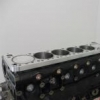Project Rb31dett. The Development Of My Open Deck Rb Engine And The Quest For More Torque!
Announcements
-
Similar Content
-
Latest Posts
-
Hey Mate , I suggest doing a search on eBay , they have a few kits that fit Q50 and might fit with a few modifications on a 400r.
-
Yeah so that clutch kit i post above would work and i do not need to worry? 🙂 https://justjap.com/products/xtreme-heavy-duty-organic-clutch-flywheel-kit-nissan-skyline-r31-r32-r33-push-type This one.
-
I'm thinking beyond spool. The claim in this alone shows evidence for spool only. But spool is one thing, what about the rest of our power band? And if we say 1mm is negligible, what is the relationship like for the gap? Is it linear? Exponential? Linear to a point and then it just doesn't matter anymore and stops getting worse? These are just all the questions... I don't know the answers definitively either.
-
This place doesn't sound good at all, what a shame. Losing one customer is losing out on more potential customers.
-





Recommended Posts
Create an account or sign in to comment
You need to be a member in order to leave a comment
Create an account
Sign up for a new account in our community. It's easy!
Register a new accountSign in
Already have an account? Sign in here.
Sign In Now